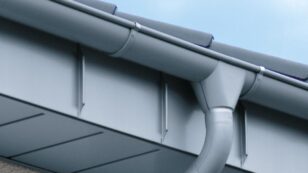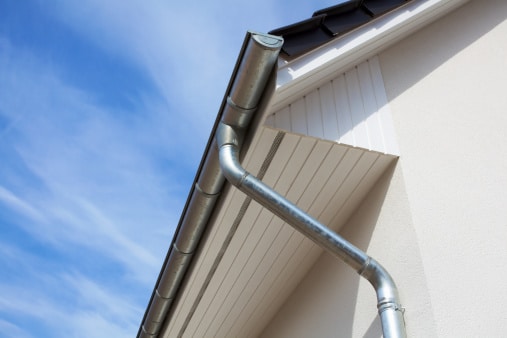
10 Best Types of Rain Gutters For Your Home
In this guide to the best gutter types, we’ll answer the following questions:
- What the pros and cons of each gutter material and style
- What should you consider when deciding what type of gutter to install?
- How do you decide which type of gutter is best for your home?
Each product and or company featured here has been independently selected by the writer. You can learn more about our review methodology here. If you make a purchase using the links included, we may earn commission.
Types of Gutters
With so many types of gutters on the market, you’re probably wondering which is best for your home’s needs.
If you need new gutters, you’re in the right place. Our straightforward roundup of the best types of gutters will help you understand the key characteristics of each gutter type including gutter size, prices, and material.
If you’d like to get in contact with a gutter professional and get a free quote for your gutter project, select one of our top providers below.
Seamless Gutters
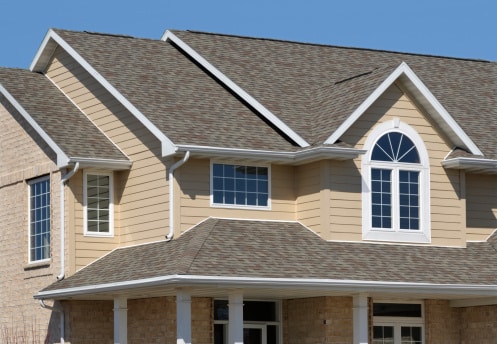
Seamless gutters come in pieces that are custom cut to fit your home. This requires special machinery and must be done by professionals.
Seamless gutters are popular because they are long-lasting and require little maintenance once installed.
Best For: Leak Prevention
Seamless gutters are a great option because they’re durable, low-maintenance and won’t leak. Seamless gutters also offer superior curb appeal because they are installed as a single piece.
Unfortunately, seamless gutters are more expensive than seamed gutters and are not DIY-friendly.
Although seamless gutters cost more, they have a longer lifespan than conventional gutters and are not as prone to cracks and leaks, which can save you money on potential home repairs down the line. This is especially true if you opt for hardy materials like steel or copper.
Seamed Gutters
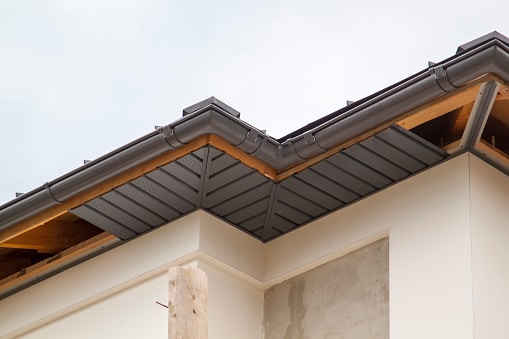
Seamed gutters, also known as sectional gutters, are cheaper and more accessible than seamless gutters. Seamed gutters are popular because they’re quick and easy to install.
Seamed gutters commonly come in 10-to-20-foot pieces that you seal or solder together with connectors. You can also cut pieces down to size with a hacksaw to get the right fit for your home.
Best For: DIY Installation
Seamed gutters are ideal if you are planning to install your own gutters. They come in sections that you assemble and install onto your home according to your roof’s dimensions.
Seamed gutters are usually made of stainless steel or aluminum, meaning they’re very durable. However, this type of gutter is more vulnerable to leaks and clogs compared to seamless gutters.
The seams where two gutter pieces connect are more susceptible to cracks and may start to leak, creating more opportunities for water damage, mold or mildew to harm your home.
Although seamed gutters are cheaper than seamless gutters, this traditional gutter type could end up costing you more down the road due to damage from water leakage, pooling or overflow.

LeafFilter
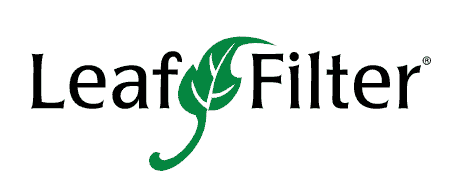
Save 12% plus $250 off on gutter guards for your home. Seniors and Military save an additional 10%.
Average cost
Pros
- Made from sustainable materials
- Materials are recyclable
- Positive customer reviews
- Has green initiatives
- Competitive pricing
Cons
- Not DIY-friendly

MasterShield

Get a free estimate today!
Average cost
Pros
- Made from sustainable and/or recycled materials
- Materials are recyclable
- Lifetime and/or comprehensive warranty
- Lots of color and design options
- Has green initiatives
Cons
- Expensive products or installation fees
- Reports of clogging
- Made of non-recyclable materials
- Not DIY-friendly

HomeCraft
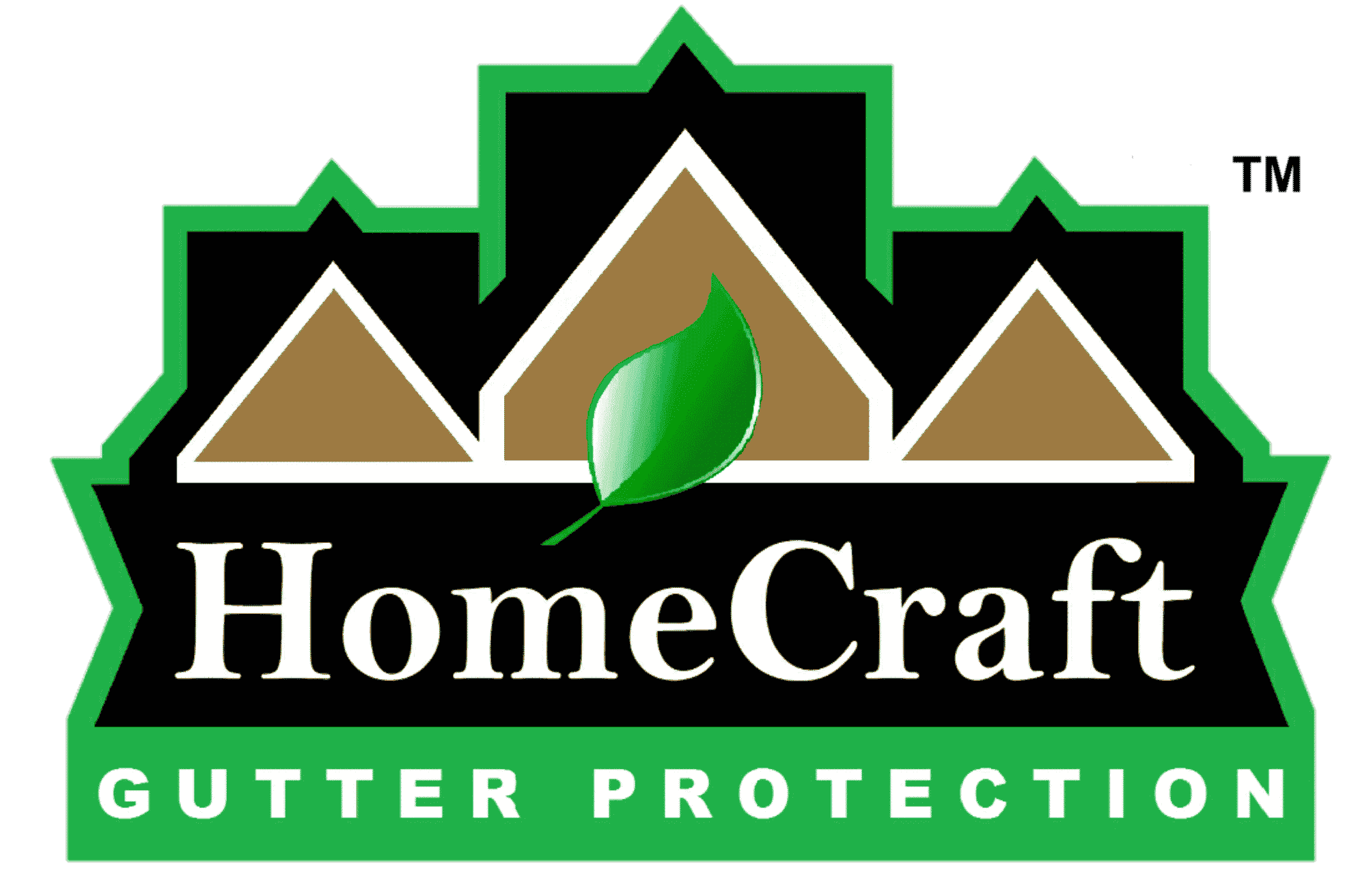
New customers save 30%.
Average cost
Pros
- Offers pitched/diamond designs for better flow
Cons
- No stated commitment to bettering the environment
- Some negative online reviews
- Limited availability
Half-Round Gutters
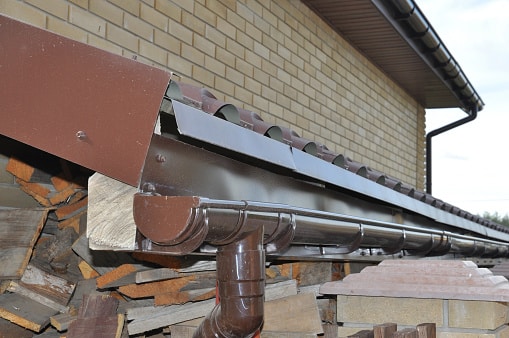
Half-round gutters have a U-shape design that complements historic-style or older homes with rounded features. Although not as popular as K-style gutters, some homeowners prefer the aesthetic qualities of the half-round gutter shape.
Best For: Classic Aesthetics
Most homeowners who choose half-round gutters prefer the appearance of these gutters on their homes. However, half-round gutters offer more practical benefits as well.
Half-round gutters have a rounded interior that allows water to wash out debris and flow through the gutter system easily. This makes half-round gutters durable and less prone to metal corrosion.
On the other hand, K-style gutters have more creases that could lead to leaks or water pooling.
Because half-round gutters do not have a flat side, they are more time-consuming to install than K-style gutters. We recommend opting for a professional installation if you choose half-round gutters for your home, as they’re not an easy DIY option.
K-Style Gutters
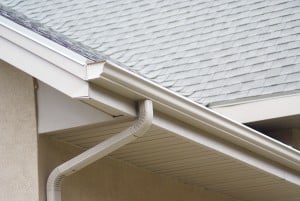
K-style gutters have a more angular appearance compared to half-round gutters. These gutters are the most popular gutter style because they blend in with the edges of modern homes. They’re also quicker and easier to install than half-round gutters.
Best For: Modern Homes
K-style gutters look like interior molding, allowing the gutters to blend in and create a refined appearance.
K-style gutters are also cheaper and easier to install than half-round gutters. This is because they have a flat surface that can be nailed directly into the fascia board of your home. As such, a K-style gutter installation is DIY-friendly.
One downside of K-style gutters is that you have to clean them more often. The inner angles of the gutter can catch debris and cause buildup, so you should be mindful of clogs.
Custom Fascia Gutters
Fascia gutters are a modern gutter style that eliminates the need to install fascia boards on your home. These gutters are attached to your roof’s rafters, while traditional gutters are attached to your wooden fascia board.
Best For: Homes Without Existing Fascia
Fascia board is a strip of material, usually wood, that runs along the bottom side of your roof. It’s located along the roofline, where your roof and exterior walls meet.
If your home does not have an existing fascia board, custom fascia gutters are the way to go. This product can increase the curb appeal of your home by covering your roof’s rafters and the edges of roof sheets and tiles.
Custom fascia gutters will be more expensive than traditional gutters, as they need to be cut to fit your home’s dimensions and professionally installed. However, once they are installed, they require little maintenance or upkeep.
Box-Style Gutters
Box-style gutters are similar in style to K-style gutters, but they tend to be larger and deeper without as many sharp corners. This makes box-style gutters a popular choice for commercial buildings.
Best For: Larger Homes and Commercial Buildings
Although the simple design and large size make box-style gutters appealing for commercial buildings, they can still be a practical choice for your home.
Box-style gutters are just as easy to install as K-style gutters and they’re easier to clean. Without the rigid edges that K-style gutters have to resemble crown molding, box-style gutters won’t collect leaves and other debris as easily.
Box-gutters also have a larger capacity than other gutter styles, making them ideal for climates that experience extreme weather conditions.
Overall, box-style gutters are a durable, long-lasting option for homeowners looking for low-maintenance gutters.
Vinyl Gutters
Vinyl is universally considered one of the cheapest gutter options. Vinyl gutters also won’t rust or corrode because they are not made of metal.
That being said, aluminum, steel, copper and zinc gutters all last significantly longer than vinyl gutters. Metal gutters are also available in more colors and styles.
Best For: Cheap Installation
Vinyl gutters are easier and cheaper to install than other types of gutters, making them a popular choice among DIYers.
Despite this, vinyl gutters are not necessarily the best or most cost-effective option in the long run. Because vinyl is usually made of PVC, it will become brittle, cracked and even start to sag after prolonged exposure to the sun.
Vinyl gutters aren’t exactly eco-friendly either. Not only do they not last as long as other gutter materials, increasing waste, but PVC has also been shown to leach harmful chemicals into the environment.1
Steel Gutters

Steel is one of the most durable gutter materials. Galvanized steel gutters typically last just as long as aluminum gutters and are more resistant to cracking, leaking and denting.
Steel tends to hold up better in severe weather than aluminum, but both materials are vulnerable to corrosion. Additionally, while aluminum is rust-resistant, steel gutters are more likely to rust over time.
Best For: Durability
Stainless steel gutters resist damage from ice, snow, hail or rain, as well as denting or bending from ladders and fallen tree branches. Steel gutters also do not expand and contract as much as aluminum during temperature fluctuations.
Although steel is great for durability, the material’s vulnerability to rust and higher price point generally makes aluminum gutters a more popular choice.
Aluminum Gutters
Aluminum gutters are very similar in appearance to steel gutters, but they differ in some key ways. For starters, aluminum gutters are lighter and more rust-resistant than steel. Aluminum gutters also tend to be cheaper.
Aluminum and galvanized steel gutters both last 20–25 years, meaning that both metal options will last longer than vinyl gutters.
Best For: Overall Quality and Popularity
Aluminum gutters are extremely popular because they are long lasting, lightweight and rust-proof. Seamless aluminum gutters will offer you the best longevity because they resist cracks and leaks.
Additionally, aluminum gutters rank at the top of the list for sustainability thanks to their durability and endless recyclability.
Aluminum gutters are commonly installed using brackets, hangers or screws. However, due to aluminum expanding and contracting depending on the temperature, you may also want to install aluminum gutters with expansion joints to prevent wrinkling.
Aluminum is also vulnerable to denting, so consider choosing a thicker aluminum or steel gutter material if you live in a climate that experiences heavy hail or ice storms.
Copper or Zinc Gutters
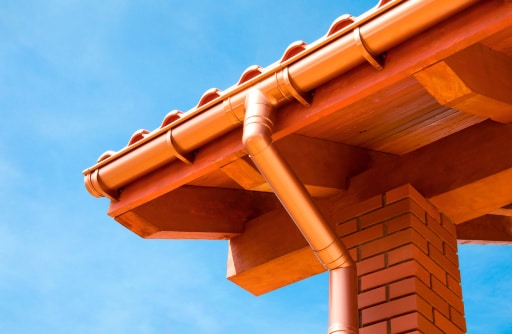
Copper and zinc gutters add a unique, beautiful detail to your home that no other gutter materials can. That being said, copper is considered a luxury gutter material, and is quite expensive, with the cost of zinc not far behind.
Additionally, copper and zinc can both be stolen from your home to be sold for scrap value. It may seem odd, but this is something you will have to consider when installing zinc and (especially) copper gutters.
Best For: Longevity
Copper and zinc gutters are by far the most long-lasting gutter material, lasting 50–100 years. Copper is especially resilient in coastal climates with salty air that would cause other gutter materials to corrode quickly.
This awesome benefit does come with a cost: copper gutters cost up to $40 per linear foot, about eight times the cost of a vinyl gutter. Zinc gutters are slightly cheaper, running you between $10 and $25 per linear foot.
What To Consider When Choosing Rain Gutters
Here are the most important factors to consider when choosing which rain gutters are best for you:
How much gutters cost
The price per linear foot of different types of gutters, and materials can vary greatly. Vinyl gutters are the cheapest option, but they do not last as long as metal gutters. For a few dollars more per linear foot, it may be worth it to install aluminum or steel gutters instead.
How durable the gutter material will be
Seamless and metal gutters tend to be the most durable. Galvanized steel, aluminum and copper gutters are some of the most durable gutters on the market.
Talk to your gutter installer about what gutter materials are the most durable. You’ll want to look for gutters that are rust-proof and resistant to scratches or dents.
How much maintenance the gutter needs
Some gutter styles require more upkeep than others. For instance, K-style gutters will require more frequent gutter cleaning because of their edges. Seamed gutters may require more frequent gutter repair because they tend to leak.
Every gutter style or material will require slightly different upkeep, so keep this in mind when selecting gutters for your home.
How expensive the installation process is
Although professional gutter installation is more expensive, hiring a professional for large home improvement projects like gutter replacements will save you time and energy. Most companies also offer a quality guarantee or warranty on their product.
However, avid DIYers can complete a gutter installation project themselves, depending on the type and material of the gutters. If you’re installing your gutters yourself, you should stick with seamed gutters that can be easily attached to your fascia board.

 233k
233k  41k
41k  Subscribe
Subscribe 


